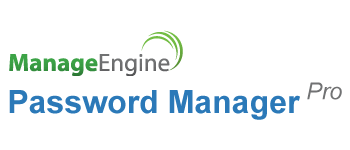Description

WhiteSource

SiteLock
Comprehensive Overview: WhiteSource vs SiteLock
WhiteSource and SiteLock are both cybersecurity solutions, but they cater to different aspects of software security and target distinct market needs. Here's a comprehensive overview of each:
WhiteSource
a) Primary Functions and Target Markets
- Primary Functions: WhiteSource specializes in open-source security and license compliance management. Its core function is to help organizations manage their open-source components by providing automated tools for vulnerability detection, license management, and policy enforcement.
- Target Markets: WhiteSource primarily targets software development teams and enterprises that rely heavily on open-source components for software development. It serves industries such as technology, finance, and healthcare, where compliance and security are critical.
b) Market Share and User Base
- WhiteSource is considered one of the leaders in the open-source security space. While specific market share figures fluctuate, WhiteSource is recognized for its comprehensive database of open-source components and vulnerabilities.
- The user base primarily consists of large enterprises and development teams that prioritize security in their software development lifecycle.
c) Key Differentiating Factors
- Comprehensive Vulnerability Database: WhiteSource provides extensive vulnerability coverage, often updating its database to include the latest security issues.
- Automated Policy Enforcement: Users can define security and compliance policies which the tool enforces automatically across all open-source usage.
- Ease of Integration: It offers seamless integration with popular development environments and CI/CD pipelines, making it easier for teams to adopt without disrupting workflows.
SiteLock
a) Primary Functions and Target Markets
- Primary Functions: SiteLock provides website security solutions, focusing on protection against malware, DDoS attacks, and other online threats. It includes features like website scanning, web application firewall (WAF), and vulnerability patching.
- Target Markets: SiteLock primarily caters to small to medium-sized businesses (SMBs), website owners, hosting providers, and digital agencies looking to secure websites and web applications against cyber threats.
b) Market Share and User Base
- SiteLock is a well-established player in the website security market with a significant user base among hosting providers and SMBs.
- While market share specifics can vary, SiteLock is often integrated directly through hosting providers, giving it broad reach across many small business websites.
c) Key Differentiating Factors
- Focus on Website Security: Unlike WhiteSource, which is more developer-focused, SiteLock centers on protecting website operations and ensuring uptime and performance.
- Cloud-based Delivery Model: SiteLock services are delivered through the cloud, allowing easy integration with websites and scalability.
- Collaborations with Hosting Providers: SiteLock often bundles its services with hosting packages, providing widespread availability and ease of access for small businesses.
Comparison and Conclusion
WhiteSource and SiteLock operate in overlapping yet distinct areas of cybersecurity. WhiteSource focuses on securing the development process by addressing open-source risks, while SiteLock provides end-user protection for live websites against external threats.
WhiteSource is typically favored by development-focused enterprises needing open-source management and compliance, whereas SiteLock is often chosen by SMBs and website owners for direct website protection.
In terms of market presence, both have established significant niches—WhiteSource among enterprise IT and SiteLock within the hosting and SMB ecosystem. Their differentiating factors, including specific areas of focus and customer integration strategies, position them as key players within their respective segments of the cybersecurity industry.
Contact Info

Year founded :
Not Available
Not Available
Not Available
Not Available
Not Available

Year founded :
2008
+1 877-257-9263
Not Available
United States
http://www.linkedin.com/company/sitelock
Feature Similarity Breakdown: WhiteSource, SiteLock
Certainly! Below is a breakdown of feature similarities and differences between WhiteSource and SiteLock, two tools focused on different aspects of website and application security.
a) Core Features in Common
-
Security Focus: Both WhiteSource and SiteLock provide security solutions, but their focus is slightly different. WhiteSource is primarily geared towards open-source security and management, while SiteLock focuses on website security.
-
Scanning Capabilities:
- WhiteSource: Primarily offers open-source component scanning for vulnerabilities, license compliance, and code quality.
- SiteLock: Offers website scanning for vulnerabilities, malware detection, and protection against various cyber threats.
-
Alerts and Notifications: Both platforms offer alert mechanisms to inform users when security issues are detected, though the types of issues they monitor may differ.
-
Reports and Analytics: Each provides tools for generating reports, which are crucial for compliance and auditing purposes, although the data content varies according to their focus areas.
-
Dashboard: Both offer a centralized dashboard, enabling users to monitor and manage security risks effectively, though the specific metrics and information shown can differ.
b) User Interfaces Comparison
-
WhiteSource:
- The interface is typically geared towards developers and security teams who need detailed insights into open-source component usage and risks.
- Offers integrations with popular development tools and CI/CD pipelines.
- It focuses on providing comprehensive data on vulnerabilities, licensing, and component health.
-
SiteLock:
- The interface is more tailored towards website administrators and business owners looking to protect their sites from web-based threats.
- Provides a more generalized view of website security health, emphasizing ease of use for technical as well as non-technical users.
- It often includes simpler, more straightforward controls for malware removal and firewall settings.
c) Unique Features
-
WhiteSource:
- Open Source Vulnerability Tracking: A central feature of WhiteSource is its robust database that tracks open-source vulnerabilities, providing actionable insights and automatic updates.
- License Management: In-depth analysis and management of open-source licenses to ensure compliance are unique offerings of WhiteSource.
-
SiteLock:
- Malware Removal: SiteLock includes automatic malware removal as part of its core offerings, a feature not found in WhiteSource, which isn’t focused on web hosting security.
- Web Application Firewall (WAF): Provides a WAF to protect sites from a range of attacks, including SQL Injection and Cross-Site Scripting (XSS).
- Content Delivery Network (CDN): Offers CDN capabilities to enhance website performance and security, which is particularly beneficial for businesses with an online presence.
While WhiteSource and SiteLock share common ground in offering security solutions, their unique features and targeted user bases set them apart and cater to different aspects of the tech ecosystem. WhiteSource is more suitable for developers managing open-source dependencies, while SiteLock is ideal for protecting websites from online threats.
Features

Open Source Management
Security and Risk Management
Reporting and Analytics
Development Support

Security Scanning
Website Performance
Backup and Restore
Customer Trust
Best Fit Use Cases: WhiteSource, SiteLock
Certainly! WhiteSource and SiteLock cater to different aspects of digital security and software management, each uniquely positioned for particular types of businesses, projects, and scenarios.
WhiteSource
a) For what types of businesses or projects is WhiteSource the best choice?
WhiteSource is primarily focused on open source security and license compliance management. It’s an excellent choice for:
- Software Development Companies: Businesses heavily reliant on open-source components would benefit from using WhiteSource to ensure their projects are secure and compliant with open-source licenses.
- Large Enterprises: Companies with complex software supply chains that include numerous open-source components can use WhiteSource to track and manage vulnerabilities and licenses at scale.
- Technology Startups: Startups in the tech industry that are building products in fast-paced environments can use WhiteSource to automate open-source security and compliance from early development stages.
- Industries with Stringent Compliance Requirements: Sectors like finance, healthcare, and government where regulatory compliance is critical can leverage WhiteSource to ensure their open-source usage adheres to legal requirements.
d) How do these products cater to different industry verticals or company sizes?
- Industry Verticals: WhiteSource caters well to industries such as technology, finance, and healthcare, where open source software forms the backbone of application development. The financial sector, in particular, benefits due to its need for high security and compliance standards.
- Company Sizes: Large enterprises benefit the most due to their extensive use of open-source components. However, small to medium-sized businesses (SMBs) and startups will also find value, especially those with significant usage of open-source software seeking to integrate security checks seamlessly into their CI/CD pipelines.
SiteLock
b) In what scenarios would SiteLock be the preferred option?
SiteLock is a cloud-based security solution tailored primarily for website protection. It's ideal for:
- Small to Medium-sized Businesses (SMBs): SMBs that run websites and e-commerce platforms can use SiteLock to protect against malware, DDoS attacks, and other vulnerabilities.
- E-commerce Platforms: Businesses relying heavily on online sales can ensure transactional security and protect customer data with SiteLock’s comprehensive tools.
- Content Management System (CMS) Users: Websites hosted on popular CMS platforms like WordPress, Joomla, or Drupal can benefit from SiteLock’s specialized security feature sets.
- Web Development Agencies: Agencies looking to provide their clients with added security services might partner with SiteLock to offer regular security scans and vulnerability fixes.
d) How do these products cater to different industry verticals or company sizes?
- Industry Verticals: SiteLock is particularly beneficial for retail, service-based industries, and media, where the integrity of online presence is crucial for business operations and customer trust.
- Company Sizes: While SiteLock is suitable for SMBs due to its affordability and ease of use, larger companies with extensive web operations or multiple domains can also utilize SiteLock's scalable solutions. Its layered security approach allows businesses of any size to protect their online assets effectively.
In summary, while WhiteSource focuses on managing open-source software security and compliance, making it ideal for tech-focused industries and large enterprises using open-source tools, SiteLock provides comprehensive website security for businesses of all sizes that need to protect their online presence. Each caters to a specialized aspect of digital security, serving different technology needs across industries.
Pricing

Pricing Not Available

Pricing Not Available
Metrics History
Metrics History
Comparing teamSize across companies
Conclusion & Final Verdict: WhiteSource vs SiteLock
When comparing WhiteSource and SiteLock, it's essential to evaluate their core functionalities, target users, and overall capabilities to determine which offers the best value based on specific needs.
a) Best Overall Value
WhiteSource offers strong value for organizations prioritizing comprehensive open-source management and security. Its depth in identifying vulnerabilities, managing licenses, and ensuring compliance makes it particularly appealing to development-heavy environments that rely heavily on open-source components.
SiteLock, on the other hand, provides excellent value for small to medium-sized businesses looking for a robust solution for website security. It excels in malware detection and removal, vulnerability scanning, and website performance enhancement, catering specifically to website protection needs.
In terms of overall value, WhiteSource may offer better value for large enterprises with complex software development needs. SiteLock may be more valuable for smaller companies focused on maintaining web presence and security.
b) Pros and Cons
WhiteSource:
-
Pros:
- Comprehensive open-source license management and security.
- Integrates easily with CI/CD pipelines, providing real-time security assessments.
- Provides detailed reports and actionable insights for remediation.
-
Cons:
- Primarily focused on developers and may require technical expertise to fully leverage its capabilities.
- Can be more expensive and complex for smaller teams or companies not heavily reliant on open-source software.
SiteLock:
-
Pros:
- Strong focus on website security with effective malware detection and remediation.
- User-friendly interface suitable for users with minimal technical expertise.
- Provides additional features like firewall protection and CDN for enhanced website performance.
-
Cons:
- Limited to website security, might not meet broader organizational security needs.
- Can be less comprehensive for organizations requiring deeper code analysis and non-web-based software security.
c) Recommendations
When deciding between WhiteSource and SiteLock, consider the following recommendations:
-
For Development-Centric Organizations: If your primary need is securing open-source components within software projects, WhiteSource is a more appropriate choice. It is especially beneficial for those with robust development pipelines and a strong focus on compliance and vulnerability management.
-
For Website-Focused Security: If your main concern is protecting a website from cyber threats such as malware and DDoS attacks, SiteLock is the better option. It is particularly suited for businesses that need to frequently manage and secure their online presence without deep technical overhead.
-
Hybrid Needs: For organizations that require both robust software development security and website protection, consider using a combination or seeking alternative solutions that encompass both areas comprehensively.
In conclusion, the best choice depends largely on the organization's specific security priorities and technological infrastructure. Balancing technical requirements, budget constraints, and operational focus will guide users to the most suitable product for their needs.
Add to compare




